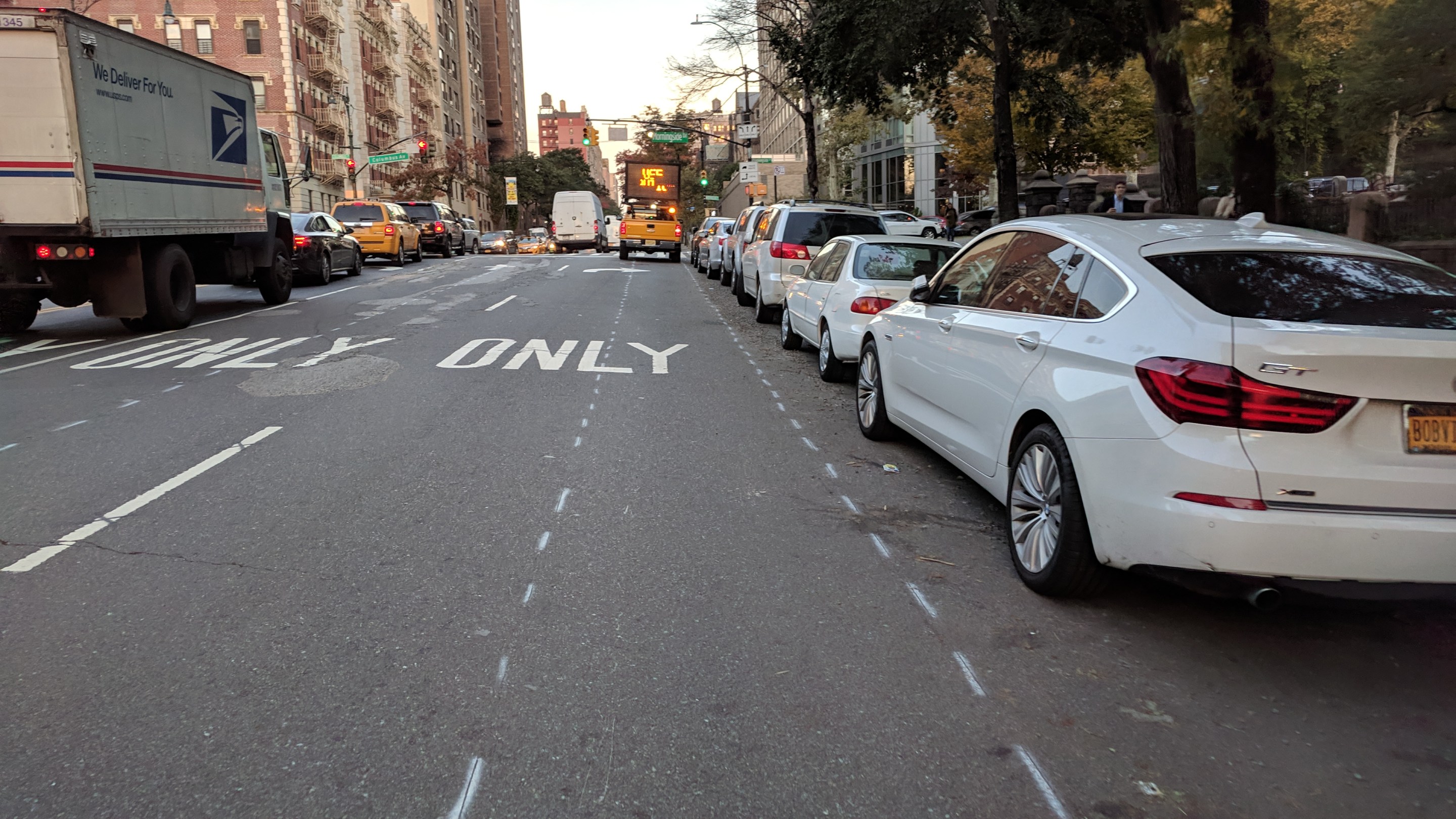The residents wanted a protected bike lane. The city didn't listen.
The Department of Transportation is going ahead with a less-safe plan to add painted bike lanes on West 110th Street approaching Central Park [PDF], despite repeated demands from the local community board for a properly protected — and safer — lane.
"They gave a presentation that did not have a protected bike lane and we turned it down because safety is incredibly important," CB 7 Transportation Co-Chairman Howard Yaruss told Streetsblog. "They came back three months later with the identical presentation. I don’t know what they were thinking."
Agency reps later told CB 7 its request for a protected bike lane was not feasible, but did not give an explanation as to why, Yaruss said.

Unprotected bike lanes are more likely to attract illegal double-parking, which can have deadly consequences. In August, 23-year-old Australian tourist Madison Lyden was killed on Central Park West after being forced into traffic by a double-parked taxi that had pulled over into a painted lane.
CB 7 has since requested a protected lane for that route, but the city has not committed to it yet.
"Painted lanes may look like a quick and cheap way to accommodate cyclists, but these lanes are easily ignored by motorists and can quickly turn into literal death traps, as we tragically learned this summer on Central Park West," CB 7 member Ken Coughlin said.
"In light of this, it’s hard to fathom why DOT would continue to move forward with a plan for an unprotected painted lane. Haven’t we learned anything?"
The DOT has long said that protected lanes are far safer than unprotected lanes, reducing crashes and increasing cycling, which is a stated Vision Zero goal.
The Department of Transportation issued this statement to Streetsblog, which we are printing verbatim because otherwise readers may think we are making it up:
"This phase of the project completes the installation of bicycle facilities along 110th Street from the east side to the west side of Manhattan," spokeswoman Alana Morales said. "The new design will benefit cyclists and pedestrians by calming traffic and providing dedicated space for biking. The Department will continue to work with stakeholders on potential additional enhancements to the corridor in the future."






